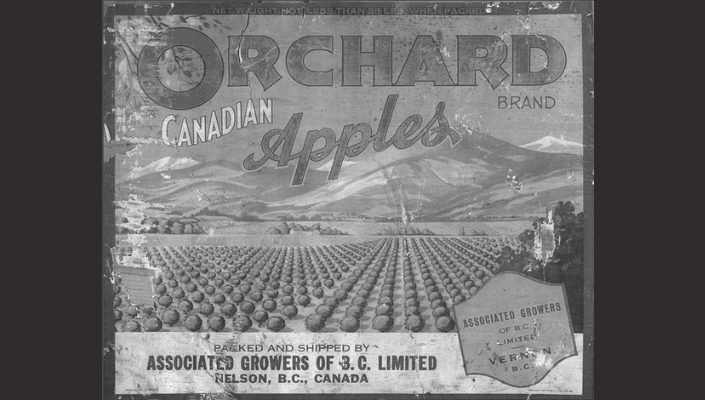The implementation of a central selling system for all of B.C. fruit in the late 1930s was the final blow for many Kootenay orchardists. The marketing of fruit in B.C. had always been a challenge. While the implementation of a revised Natural Products Marketing Act in 1937 aimed to stabilize the market and served some, it ruined many of the remaining Kootenay orchardists who relied on the loyalty of private customers and the frugality of their practices.
By 1938, the Natural Products Marketing Act had led to an experiment with one-desk selling in which “shippers agreed to sell through British Columbia Tree Fruits Limited, which the Provincial Marketing Board designated as the sole agency for the marketing of apples.” 30
One of the primary issues of “one-desk selling” for the Kootenay Orchardist was the cost of standardized packaging and shipping.31
Procter orchardist, Hild Ogden, recalls a representative experience of how the central selling system ended their livelihood:
“We grew fruit on our farm and specialized in cherries, shipping to our private customers on the Prairies. If you had a good product, word got around, and before very long we had a very good string of customers who wouldn’t take anyone else’s fruit if they could get ours. We all worked together – six children and my parents. Fruit went out as quickly as we could truck it to the railway either in Nelson or, in the case of cherries, to Procter. We also sold to the Jam Factory in Nelson. However, once my father had to sell through the Associated he had to buy their boxes and ship their way – we were no longer allowed to ship to our private customers. There was never any money left as profit. That [Natural] Products Marketing Act finished our little family industry in Procter.” 31
Despite claims in promotional brochures that “the prairie market [would] always will be inexhaustible” 32 and that agriculture would “always rank, as one of the greatest and most permanent industries of this glorious section known as the Kootenay District,” 33 the industry collapsed and by the 1940s was no longer financially viable. 31 While a few orchards persisted into the 1950s, most fruit ranches were sold and plowed over and with those trees went the remaining artifacts of a pioneering generation; the Kootenay orchardists.
30. Dendy, A Fruitful Century
31. Lang, Lost Orchards, 98 – 99
32. Kootenay Orchard Association Limited, The Lake District of Southern British Columbia
33. West Kootenay Fruit Ranches published in BC Outdoors October/November 1981
